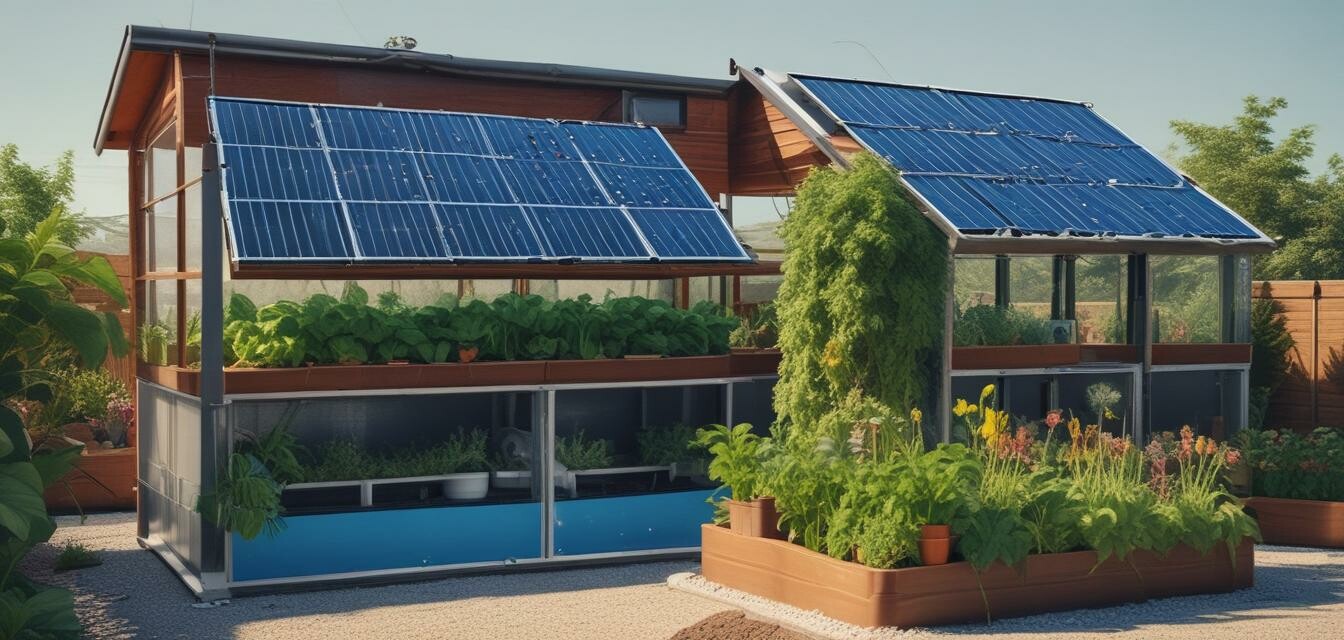
How to Create a Solar-Powered Aquaponics System
Key Takeaways
- Aquaponics combines aquaculture and hydroponics for sustainable food production.
- Solar panels can power pumps, lights, and aerators in your system.
- Building your own system can be a rewarding DIY project that promotes self-sufficiency.
- Consider using native plant and fish species for optimal results.
- Maintain water quality and balance for sustainable aquaponic gardening.
Building a solar-powered aquaponics system is an innovative way to grow food sustainably. This DIY project not only allows you to produce fresh vegetables and fish but also utilizes renewable energy, promoting grid independence. Let's dive into the essential steps to create your own solar-powered aquaponics system.
What is aquaponics?
Aquaponics is an integrated farming system that combines traditional aquaculture (raising fish) with hydroponics (growing plants in water) in a symbiotic environment. Fish waste provides the nutrients for the plants, and in return, the plants help filter and purify the water, creating a sustainable ecosystem.
Benefits of solar-powered aquaponics
- Utilizes renewable energy to decrease reliance on the grid.
- Reduces operational costs associated with power consumption.
- Encourages efficient use of resources by integrating systems.
- Promotes food security by facilitating local food production.
Materials needed
Before you start building your solar-powered aquaponics system, gather the following materials:
| Material | Purpose |
|---|---|
| Fish tank or pond | To house the fish and provide water for the plants. |
| Grow bed | Where plants will grow, often filled with media like gravel or clay balls. |
| Water pump | To circulate water between the fish tank and grow bed. |
| Solar panels | To provide energy for the water pump and any additional systems. |
| Aerator | To ensure oxygen levels are adequate for fish and plants. |
| Piping and tubing | To transport water between components. |
| Fish and plants | To initiate the aquaponics system. |
Step-by-step guide to building your solar-powered aquaponics system
Step 1: Plan your system
Begin by designing your aquaponics system layout. Consider the space available in your backyard and the number of fish and plants you want to include. Remember to incorporate the solar panels strategically to maximize sunlight exposure.
Step 2: Set up the fish tank
Choose a durable fish tank or pond that can hold enough water to support your fish. Select a location that provides adequate sunlight and protection from harsh weather. Fill the tank with water and add a dechlorinator if using tap water.
Step 3: Install the grow bed
Position the grow bed above the fish tank to facilitate water circulation. You can create a simple grow bed using a plastic container filled with grow media such as gravel, clay balls, or hydroponic mats.
Step 4: Connect the water pump
Install a water pump in the fish tank to pump water to the grow bed. Use piping and tubing to create a flow system that allows the water to return to the fish tank after nourishing the plants. Power the pump using solar energy to maintain a sustainable operation.
Step 5: Add fish and plants
Select fish species that are suitable for your climate and preferences, such as tilapia or goldfish. Choose native plants that thrive in aquaponic systems, including lettuce, herbs, and tomatoes. Introduce the fish first, and allow bacteria to establish in the tank for at least a week before adding plants.
Step 6: Monitor and maintain
Keep an eye on the water quality, temperature, and nutrient levels. Test the pH and ammonia levels regularly to ensure a balanced environment for your fish and plants. Adjust feeding routines and water circulation as needed to maintain optimal conditions.
Tips for success
- Start small and scale up as you gain experience.
- Consider incorporating vertical gardening techniques to maximize space.
- Utilize companion planting to enhance plant growth and pest management.
- Regularly check and clean the solar panels to maintain efficiency.
Conclusion
Creating a solar-powered aquaponics system is not just a practical DIY project — it is a step toward self-sufficiency and sustainability. By integrating renewable energy into your aquaponics setup, you will save on energy costs, contribute to environmental conservation, and enjoy fresh produce directly from your backyard.
Pros
- Promotes sustainable farming practices.
- Reduces reliance on external energy sources.
- Provides fresh food year-round.
- Encourages ecological balance.
Cons
- Initial setup costs can be high.
- Requires regular monitoring and maintenance.
- Difficulties may arise in balancing fish and plant needs.
If you're looking to enhance your knowledge about solar solutions, consider exploring our buying guides or news and trends sections. For those interested in solar components, our solar panels and battery storage guides provide essential insights for your next project.


